
Composting and Collaboration: Colleges Unite at East Central University
February 23, 2023 by Jessika Leatherbury
By: Sunnie Dawn Baker
 The story of humanity can be told in compost. Archeologists find rich detail about a society in what they throw away, in what decomposes, and what is left to be found centuries later. As our modern society has produced a growing amount of waste, a growing body of environmental research has noted the environmental impact of humans. New research and reports come with significantly increasing dire warnings about the future of our planet and humanity. While this can be overwhelming, there are people who are searching for solutions and taking the steps that are needed to have a positive impact on the environment. Three of these individuals are professors at East Central University: Jose Montalva, Dr. Leah Dudley, and Dr. Germain Pichop.
The story of humanity can be told in compost. Archeologists find rich detail about a society in what they throw away, in what decomposes, and what is left to be found centuries later. As our modern society has produced a growing amount of waste, a growing body of environmental research has noted the environmental impact of humans. New research and reports come with significantly increasing dire warnings about the future of our planet and humanity. While this can be overwhelming, there are people who are searching for solutions and taking the steps that are needed to have a positive impact on the environment. Three of these individuals are professors at East Central University: Jose Montalva, Dr. Leah Dudley, and Dr. Germain Pichop.
According to a 2018 report from the Environmental Protection Agency on Municipal Solid Waste, food waste accounted for 21.6% of our landfills, or 63.1 million tons in a single year. Paper and paperboard accounted for another 23.1%. Not only do landfills take up space in our country, covering approximately 1.8 million acres, but they also produce harmful gasses and liquids that can contaminate our groundwater. While these challenges might be intimidating, this is where Montalva, a Biology professor, saw an opportunity.
This past summer Montalva received a grant from the Oka’ Water Institute to do a study of water resources and composting. He had already been working with students at the Outdoor Learning Experience (OLE) Community Garden. They decided to experiment with composting in order to reduce food waste while also producing nutrient rich soil for growing more food. They collected the food scraps from the Ada Food Bank at Asbury Methodist Church and mixed it with recycled paper from East Central University in order to create soil. At first it was just an experiment, but in a mere eight months they created ten tons of usable compost.
One of the reasons they are able to make so much compost in such a short amount of time is because they were using a Bokashi and hot composting method instead of the more traditional cold method that most people think about when they consider composting. Cold compost is where people have a pile, usually in their backyard, where they will put their food scraps and dried leaves. They don’t have to aerate it and can just let it decompose slowly on its own. While it doesn’t kill weed seeds or pathogens, it also allows helpful creatures like earthworms to survive that can help as well. Cold composting is one of the most low maintenance methods for producing compost, but it takes much longer to create.
Hot composting, on the other hand, is a bit more time intensive. First a Bokashi starter is made out of food scraps and fermented milk that helps break down the scraps. These two ingredients are layered in a hermetically sealed bucket and then left to rest for five weeks. Once this process is complete, it is layered with shredded recycled paper, leaves, and other similar materials. The original starter made of food scraps serves as an accelerant and transforms the other materials very quickly. Montalva notes that during one of the recent cold days it was 20 degrees Fahrenheit outside, but when he checked on the temperature of the compost pile it was sitting at 130 degrees. In addition to producing large quantities of nutrient rich soil in a short amount of time, this method also kills any pathogens in the soil as well as weed seeds.
After their great success, Montalva and Dudley were speaking with Dr. Ken Andrews, Dean of the ECU College of Health and Sciences. He suggested that they partner with someone in the School of Business to see what the opportunities could be for monetizing and scaling this project. Pichop was excited to join this venture because he saw opportunities for his students, the university, as well as the environment. This semester a group of Pichop’s students will be thinking about this venture when they are working on their social entrepreneurship projects and coming up with a small business plan that encompasses multiple possibilities for this burgeoning business.
As the business scales, so, too, does the environmental impact. Dudley says, “We would like for ECU to become sustainable. We could transform ECU into a green institution using all of the campus food and paper waste. We could sell the compost, but, additionally, we could also transform into a place where we could sell our carbon credits.” These are some of the ideas that Pichop and his students are examining. How could ECU sell and market this compost but also how could they use this scalable technology to become environmentally sustainable enough to generate revenue from their carbon tax credits?
Each member of their team has their own dreams for how this project can scale. Montalva sees this as something that can not only transform ECU but also be implemented in other places in order to lower the collective carbon footprint. Dudley would like for this to eventually be a community wide initiative. However, she says, “I don’t know if those stars are too big. I think it is doable, but we need to do it wisely. We will need to grow at the right rate and get buy-in from the campus and the larger community.” Pichop is especially excited about the possibility of acquiring and selling the carbon tax credits to help provide scholarships to students.
Most of all, though, these three are excited for the chance to be able to do something to actively help the environment, as well as giving students and community members a chance to help. Dudley says, “I’m most excited about getting students involved. They are so aware of what is going on in the environment that apathy can start to come into play. This gives them a tangible solution that could make a huge impact.” Pichop understands this reasoning completely. He says, “I have always been excited about recycling and reusing but have become disappointed because of how much of it does end up in the landfill. But this is one way to actually recycle these things—returning it to the ground and growing more food.” The partnership between these two colleges—science and business—allows these three to come up with innovative ways to help the environment while engaging the community and creating a scalable business and a sustainable environment. They saw a problem, and they found a solution, to the benefit of us all.
Sign up to receive more news from the Ada Jobs Foundation HERE!
Written by
Jessika Leatherbury
You may also interested in:
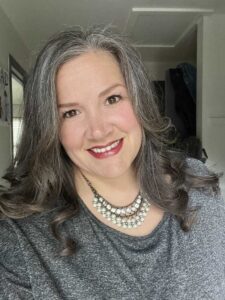
Adapt and Overcome: Allison Poe’s Recipe for Resilience and Growth
By: Sunnie Dawn Baker Allison Poe has always followed her feet. She waits for the signs to appear and, once she recognizes them, she travels that path, and has never
Jeff Warren: A Life in Sound, Vision, and Storytelling
By: Sunnie Dawn Baker When Jeff Warren got involved in the Houston music scene as a teenager, he had no clue where his path would lead. Now, nearly thirty years
From Pitch to Progress: ECU's Glass Recycling Program Turns Waste into Opportunity
By: Sunnie Dawn Baker In 2018, Dr. Christine Pappas competed in Ada Jobs Foundation’s Big Pitch Competition by promoting grinding glass bottles into sand. She won the Big Pitch that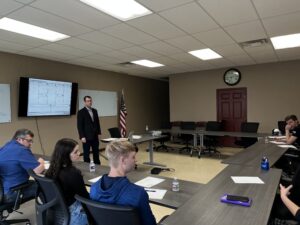
The Importance of Customer Discovery: Know Your Audience and Know Your Market
By: Sunnie Dawn Baker Entrepreneurs and small business owners must consider many factors to achieve success, with their target market being one of the most crucial. Sometimes, when people are
What Does Economic Development Do for You? The Significance of the Economic Multiplier
By: Sunnie Dawn Baker People often find the term “economic development” vague and confusing. Understanding how economic development works and benefits the community can be challenging. Though there are many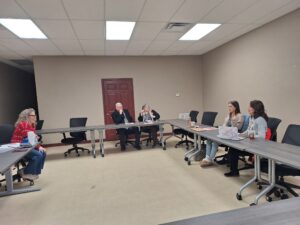
Helping Entrepreneurs One Workshop at a Time: Lauri Rowe and QuickBooks for Small Businesses
Entrepreneurs tend to be filled with passion and big ideas. They have found a solution to a problem they see in the world, and they barrel ahead, excited for their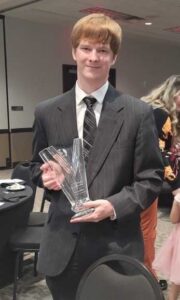
Hunter Cook: Technology, Entrepreneurship, and the Written Word
By: Sunnie Dawn Baker Hunter Cook started writing when he was seven years old. At first, he wanted to write comic books, but then he realized he couldn’t draw. He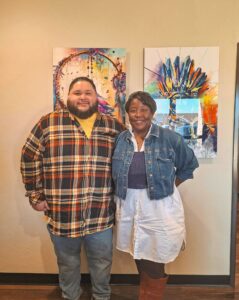
Empowering Native Artists: FAME App Brings Innovation to First American E-Commerce
By: Sunnie Dawn Baker Entrepreneurs are problem solvers. They are constantly striving for solutions to issues they see in the world or in their own lives. In the case of
Learn, Connect, and Grow: 2025 Workshops for Aspiring and Current Business Owners
By: Sunnie Dawn Baker A new year brings new possibilities, and, at the Ada Jobs Foundation, it also brings a new round of programming and workshops. As the local Economic